1. Dy M, Schneider E. Histamine-cytokine connection in immunity and hematopoiesis. Cytokine Growth Factor Rev. 2004; 15:393–410. PMID:
15450254.

2. Hofstra CL, Desai PJ, Thurmond RL, Fung-Leung WP. Histamine H4 receptor mediates chemotaxis and calcium mobilization of mast cells. J Pharmacol Exp Ther. 2003; 305:1212–1221. PMID:
12626656.
3. Niimi N, Noso N, Yamamoto S. The effect of histamine on cultured endothelial cells. A study of the mechanism of increased vascular permeability. Eur J Pharmacol. 1992; 221:325–331. PMID:
1426009.
4. Schaefer U, Schneider A, Rixen D, Neugebauer E. Neutrophil adhesion to histamine stimulated cultured endothelial cells is primarily mediated via activation of phospholipase C and nitric oxide synthase isozymes. Inflamm Res. 1998; 47:256–264. PMID:
9683033.

5. Yanai K, Son LZ, Endou M, Sakurai E, Nakagawasai O, Tadano T, Kisara K, Inoue I, Watanabe T, Watanabe T. Behavioural characterization and amounts of brain monoamines and their metabolites in mice lacking histamine H1 receptors. Neuroscience. 1998; 87:479–487. PMID:
9740406.

6. De Backer MD, Gommeren W, Moereels H, Nobels G, Van Gompel P, Leysen JE, Luyten WH. Genomic cloning, heterologous expression and pharmacological characterization of a human histamine H1 receptor. Biochem Biophys Res Commun. 1993; 197:1601–1608. PMID:
8280179.
7. Gantz I, Munzert G, Tashiro T, Schäffer M, Wang L, DelValle J, Yamada T. Molecular cloning of the human histamine H2 receptor. Biochem Biophys Res Commun. 1991; 178:1386–1392. PMID:
1714721.

8. Lovenberg TW, Roland BL, Wilson SJ, Jiang X, Pyati J, Huvar A, Jackson MR, Erlander MG. Cloning and functional expression of the human histamine H3 receptor. Mol Pharmacol. 1999; 55:1101–1107. PMID:
10347254.
9. Oda T, Morikawa N, Saito Y, Masuho Y, Matsumoto S. Molecular cloning and characterization of a novel type of histamine receptor preferentially expressed in leukocytes. J Biol Chem. 2000; 275:36781–36786. PMID:
10973974.

10. Sander LE, Lorentz A, Sellge G, Coëffier M, Neipp M, Veres T, Frieling T, Meier PN, Manns MP, Bischoff SC. Selective expression of histamine receptors H1R, H2R, and H4R, but not H3R, in the human intestinal tract. Gut. 2006; 55:498–504. PMID:
16299042.

11. Breunig E, Michel K, Zeller F, Seidl S, Weyhern CW, Schemann M. Histamine excites neurones in the human submucous plexus through activation of H1, H2, H3 and H4 receptors. J Physiol. 2007; 583:731–742. PMID:
17627982.
12. Szurszewsik JH. Johnson LR, editor. Electrical basis for gastrointestinal motility. Prostaglandins and the Gastrointestinal Tract. 1987. New York: Raven Press;p. 383.
13. Huizinga JD, Thuneberg L, Klüppel M, Malysz J, Mikkelsen HB, Bernstein A. W/kit gene required for interstitial cells of Cajal and for intestinal pacemaker activity. Nature. 1995; 373:347–349. PMID:
7530333.

14. Lee HW, Baak CH, Lee MY, Kim YC. Spontaneous contractions augmented by cholinergic and adrenergic systems in the human ureter. Korean J Physiol Pharmacol. 2011; 15:37–41. PMID:
21461239.

15. Ordög T, Ward SM, Sanders KM. Interstitial cells of cajal generate electrical slow waves in the murine stomach. J Physiol. 1999; 518:257–269. PMID:
10373707.
16. Sanders KM. A case for interstitial cells of Cajal as pacemakers and mediators of neurotransmission in the gastrointestinal tract. Gastroenterology. 1996; 111:492–515. PMID:
8690216.

17. Ward SM, Ordog T, Koh SD, Baker SA, Jun JY, Amberg G, Monaghan K, Sanders KM. Pacemaking in interstitial cells of Cajal depends upon calcium handling by endoplasmic reticulum and mitochondria. J Physiol. 2000; 525:355–361. PMID:
10835039.

18. Poli E, Pozzoli C. Histamine H3 receptors do not modulate reflex-evoked peristaltic motility in the isolated guinea-pig ileum. Eur J Pharmacol. 1997; 327:49–56. PMID:
9185835.

19. Korte A, Myers J, Shih NY, Egan RW, Clark MA. Characterization and tissue distribution of H3 histamine receptors in guinea pigs by N alpha-methylhistamine. Biochem Biophys Res Commun. 1990; 168:979–986. PMID:
2161226.
20. Lovenberg TW, Roland BL, Wilson SJ, Jiang X, Pyati J, Huvar A, Jackson MR, Erlander MG. Cloning and functional expression of the human histamine H3 receptor. Mol Pharmacol. 1999; 55:1101–1107. PMID:
10347254.
21. Pozzoli C, Poli E, Costa A, De Ponti F. Absence of histamine H3-receptors in the rabbit colon: species difference. Gen Pharmacol. 1997; 29:217–221. PMID:
9251902.

22. Fargeas MJ, Fioramonti J, Bueno L. Involvement of different receptors in the central and peripheral effects of histamine on intestinal motility in the rat. J Pharm Pharmacol. 1989; 41:534–540. PMID:
2571697.

23. Oishi R, Adachi N, Saeki K. N alpha-methylhistamine inhibits intestinal transit in mice by central histamine H1 receptor activation. Eur J Pharmacol. 1993; 237:155–159. PMID:
8103457.
24. Kim H, Dwyer L, Song JH, Martin-Cano FE, Bahney J, Peri L, Britton FC, Sanders KM, Koh SD. Identification of histamine receptors and effects of histamine on murine and simian colonic excitability. Neurogastroenterol Motil. 2011; 23:949–e409. PMID:
21806740.

25. Koh SD, Sanders KM, Ward SM. Spontaneous electrical rhythmicity in cultured interstitial cells of cajal from the murine small intestine. J Physiol. 1998; 513:203–213. PMID:
9782170.

26. Muller MJ, Prior T, Hunt RH, Rangachari PK. H1 contractile and H2 relaxant receptors in canine gastric muscularis mucosae. Life Sci. 1993; 52:PL49–PL53. PMID:
8429755.
27. Lim HD, van Rijn RM, Ling P, Bakker RA, Thurmond RL, Leurs R. Evaluation of histamine H1-, H2-, and H3-receptor ligands at the human histamine H4 receptor: identification of 4-methylhistamine as the first potent and selective H4 receptor agonist. J Pharmacol Exp Ther. 2005; 314:1310–1321. PMID:
15947036.

28. Campoli-Richards DM, Buckley MM, Fitton A. Cetirizine. A review of its pharmacological properties and clinical potential in allergic rhinitis, pollen-induced asthma, and chronic urticaria. Drugs. 1990; 40:762–781. PMID:
1981354.
29. Koh SD, Jun JY, Kim TW, Sanders KM. A Ca
2+-inhibited non-selective cation conductance contributes to pacemaker currents in mouse interstitial cell of Cajal. J Physiol. 2002; 540:803–814. PMID:
11986370.
30. Claro E, Garcia A, Picatoste F. Carbachol and histamine stimulation of guanine-nucleotide-dependent phosphoinositide hydrolysis in rat brain cortical membranes. Biochem J. 1989; 261:29–35. PMID:
2549964.

31. Repka-Ramirez MS. New concepts of histamine receptors and actions. Curr Allergy Asthma Rep. 2003; 3:227–231. PMID:
12662472.

32. Donaldson J, Hill SJ. Histamine-induced hydrolysis of polyphosphoinositides in guinea-pig ileum and brain. Eur J Pharmacol. 1986; 124:255–265. PMID:
3732381.

33. Sakuma I, Gross SS, Levi R. Positive inotropic effect of histamine on guinea pig left atrium: H1-receptor-induced stimulation of phosphoinositide turnover. J Pharmacol Exp Ther. 1988; 247:466–472. PMID:
2846821.
34. Schwartz JC, Arrang JM, Garbarg M, Pollard H, Ruat M. Histaminergic transmission in the mammalian brain. Physiol Rev. 1991; 71:1–51. PMID:
1846044.

35. Kwan HY, Wong CO, Chen ZY, Dominic Chan TW, Huang Y, Yao X. Stimulation of histamine H2 receptors activates TRPC3 channels through both phospholipase C and phospholipase D. Eur J Pharmacol. 2009; 602:181–187. PMID:
19032951.

36. Kiyonaka S, Kato K, Nishida M, Mio K, Numaga T, Sawaguchi Y, Yoshida T, Wakamori M, Mori E, Numata T, Ishii M, Takemoto H, Ojida A, Watanabe K, Uemura A, Kurose H, Morii T, Kobayashi T, Sato Y, Sato C, Hamachi I, Mori Y. Selective and direct inhibition of TRPC3 channels underlies biological activities of a pyrazole compound. Proc Natl Acad Sci U S A. 2009; 106:5400–5405. PMID:
19289841.

37. Bennett A, Whitney B. A pharmacological study of the motility of the human gastrointestinal tract. Gut. 1966; 7:307–316. PMID:
5917417.

38. Bolton TB, Clark JP, Kitamura K, Lang RJ. Evidence that histamine and carbachol may open the same ion channels in longitudinal smooth muscle of guinea-pig ileum. J Physiol. 1981; 320:363–379. PMID:
6275077.

39. Boer K, Helinger E, Helinger A, Pocza P, Pos Z, Demeter P, Baranyai Z, Dede K, Darvas Z, Falus A. Decreased expression of histamine H1 and H4 receptors suggests disturbance of local regulation in human colorectal tumours by histamine. Eur J Cell Biol. 2008; 87:227–236. PMID:
18258331.

40. Bakker RA, Schoonus SB, Smit MJ, Timmerman H, Leurs R. Histamine H(1)-receptor activation of nuclear factor-kappa B: roles for G beta gamma- and G alpha(q/11)-subunits in constitutive and agonist-mediated signaling. Mol Pharmacol. 2001; 60:1133–1142. PMID:
11641442.
41. Wang YX, Kotlikoff MI. Signalling pathway for histamine activation of non-selective cation channels in equine tracheal myocytes. J Physiol. 2000; 523:131–138. PMID:
10673549.

42. Kim BJ, Lim HH, Yang DK, Jun JY, Chang IY, Park CS, So I, Stanfield PR, Kim KW. Melastatin-type transient receptor potential channel 7 is required for intestinal pacemaking activity. Gastroenterology. 2005; 129:1504–1517. PMID:
16285951.

43. Torihashi S, Fujimoto T, Trost C, Nakayama S. Calcium oscillation linked to pacemaking of interstitial cells of Cajal: requirement of calcium influx and localization of TRP4 in caveolae. J Biol Chem. 2002; 277:19191–19197. PMID:
11897792.
44. Lee KP, Jun JY, Chang IY, Suh SH, So I, Kim KW. TRPC4 is an essential component of the nonselective cation channel activated by muscarinic stimulation in mouse visceral smooth muscle cells. Mol Cells. 2005; 20:435–441. PMID:
16404161.
45. Lee YM, Kim BJ, Kim HJ, Yang DK, Zhu MH, Lee KP, So I, Kim KW. TRPC5 as a candidate for the nonselective cation channel activated by muscarinic stimulation in murine stomach. Am J Physiol Gastrointest Liver Physiol. 2003; 284:G604–G616. PMID:
12631560.
46. So KY, Kim SH, Sohn HM, Choi SJ, Parajuli SP, Choi S, Yeum CH, Yoon PJ, Jun JY. Carbachol regulates pacemaker activities in cultured interstitial cells of Cajal from the mouse small intestine. Mol Cells. 2009; 27:525–531. PMID:
19466600.

47. Kim BJ, Chang IY, Choi S, Jun JY, Jeon JH, Xu WX, Kwon YK, Ren D, So I. Involvement of Na
+-leak channel in substance P-induced depolarization of pacemaking activity in interstitial cells of Cajal. Cell Physiol Biochem. 2012; 29:501–510. PMID:
22508057.
48. Kurz JB, Perkins JP. Isoproterenol-initiated beta-adrenergic receptor diacytosis in cultured cells. Mol Pharmacol. 1992; 41:375–381. PMID:
1347147.
49. Lohse MJ. Molecular mechanisms of membrane receptor desensitization. Biochim Biophys Acta. 1993; 1179:171–188. PMID:
7692969.

50. Zang WJ, Yu XJ, Honjo H, Kirby MS, Boyett MR. On the role of G protein activation and phosphorylation in desensitization to acetylcholine in guinea-pig atrial cells. J Physiol. 1993; 464:649–679. PMID:
8229823.

51. Kim YC, Kim SJ, Sim JH, Jun JY, Kang TM, Suh SH, So I, Kim KW. Protein kinase C mediates the desensitization of CCh-activated nonselective cationic current in guinea-pig gastric myocytes. Pflugers Arch. 1998; 436:1–8. PMID:
9560440.

52. Jun JY, Choi S, Yeum CH, Chang IY, Park CK, Kim MY, Kong ID, So I, Kim KW, You HJ. Noradrenaline inhibits pacemaker currents through stimulation of beta 1-adrenoceptors in cultured interstitial cells of Cajal from murine small intestine. Br J Pharmacol. 2004; 141:670–677. PMID:
14744802.
53. Jun JY, Choi S, Yeum CH, Chang IY, You HJ, Park CK, Kim MY, Kong ID, Kim MJ, Lee KP, So I, Kim KW. Substance P induces inward current and regulates pacemaker currents through tachykinin NK1 receptor in cultured interstitial cells of Cajal of murine small intestine. Eur J Pharmacol. 2004; 495:35–42. PMID:
15219818.

54. Shahi PK, Choi S, Zuo DC, Yeum CH, Yoon PJ, Lee J, Kim YD, Park CG, Kim MY, Shin HR, Oh HJ, Jun JY. 5-hydroxytryptamine generates tonic inward currents on pacemaker activity of interstitial cells of cajal from mouse small intestine. Korean J Physiol Pharmacol. 2011; 15:129–135. PMID:
21860590.

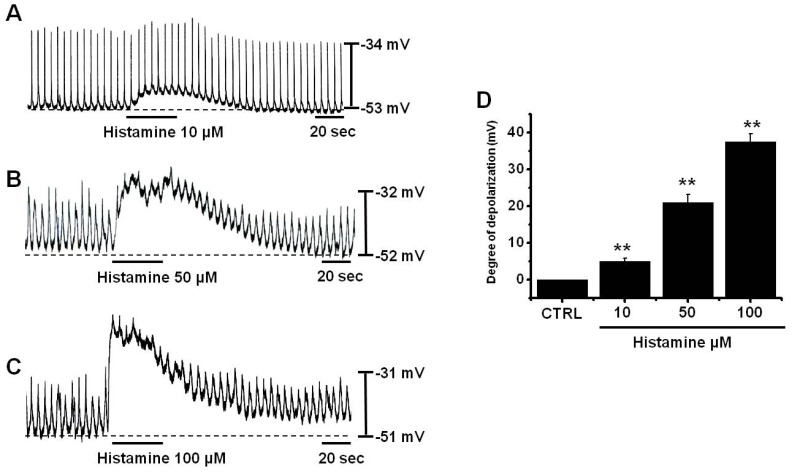
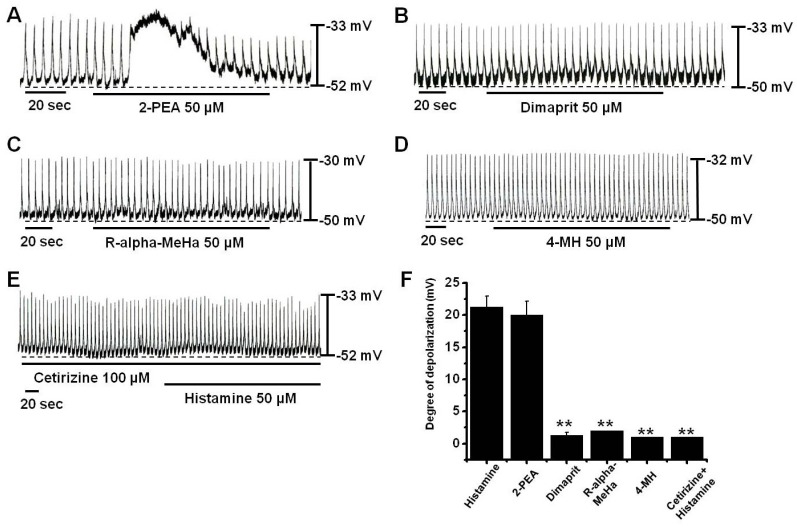
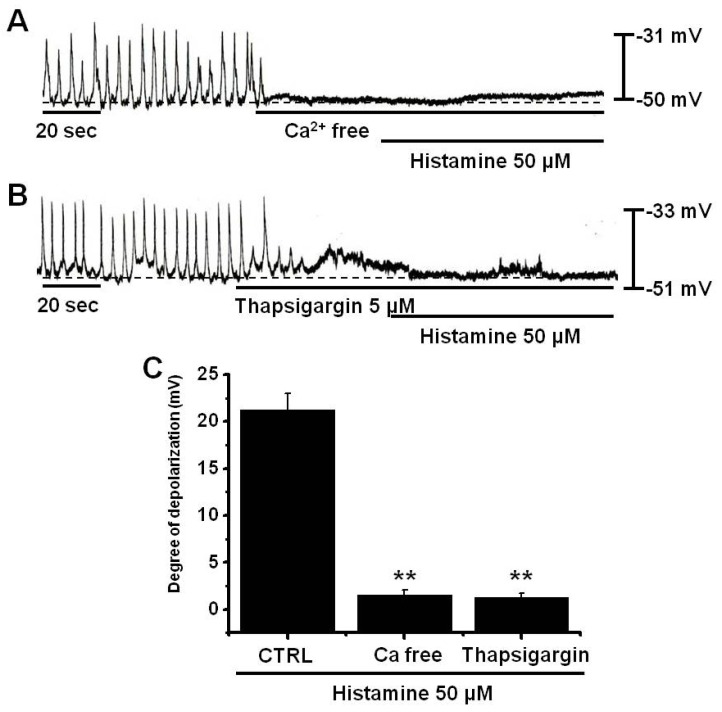
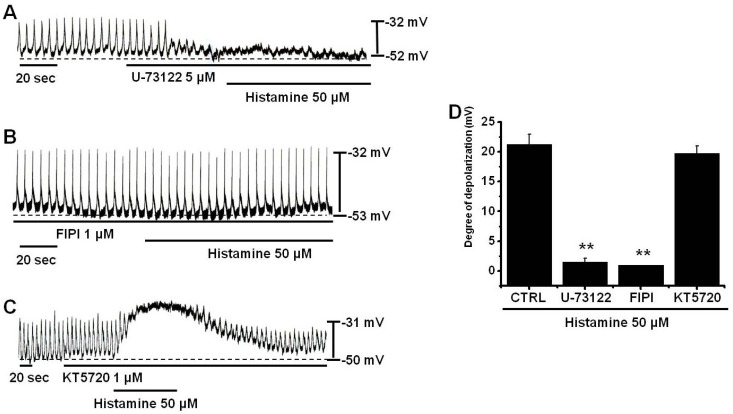
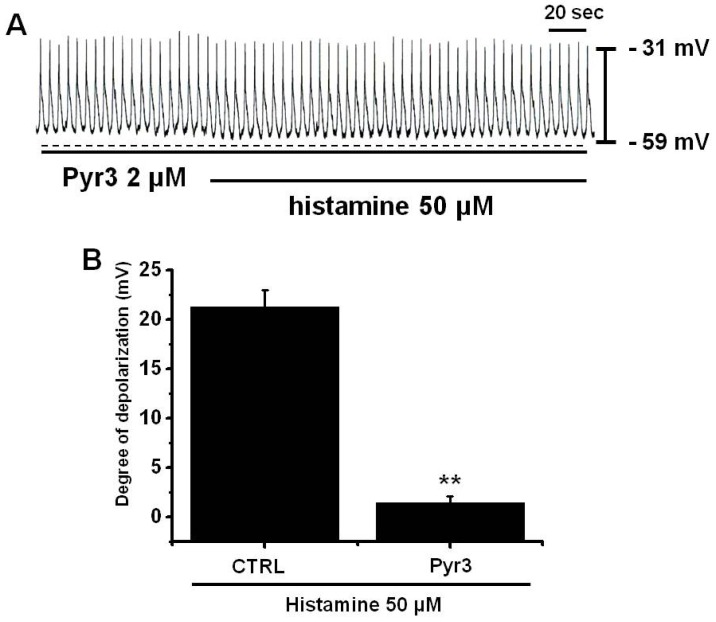




 PDF
PDF ePub
ePub Citation
Citation Print
Print


 XML Download
XML Download